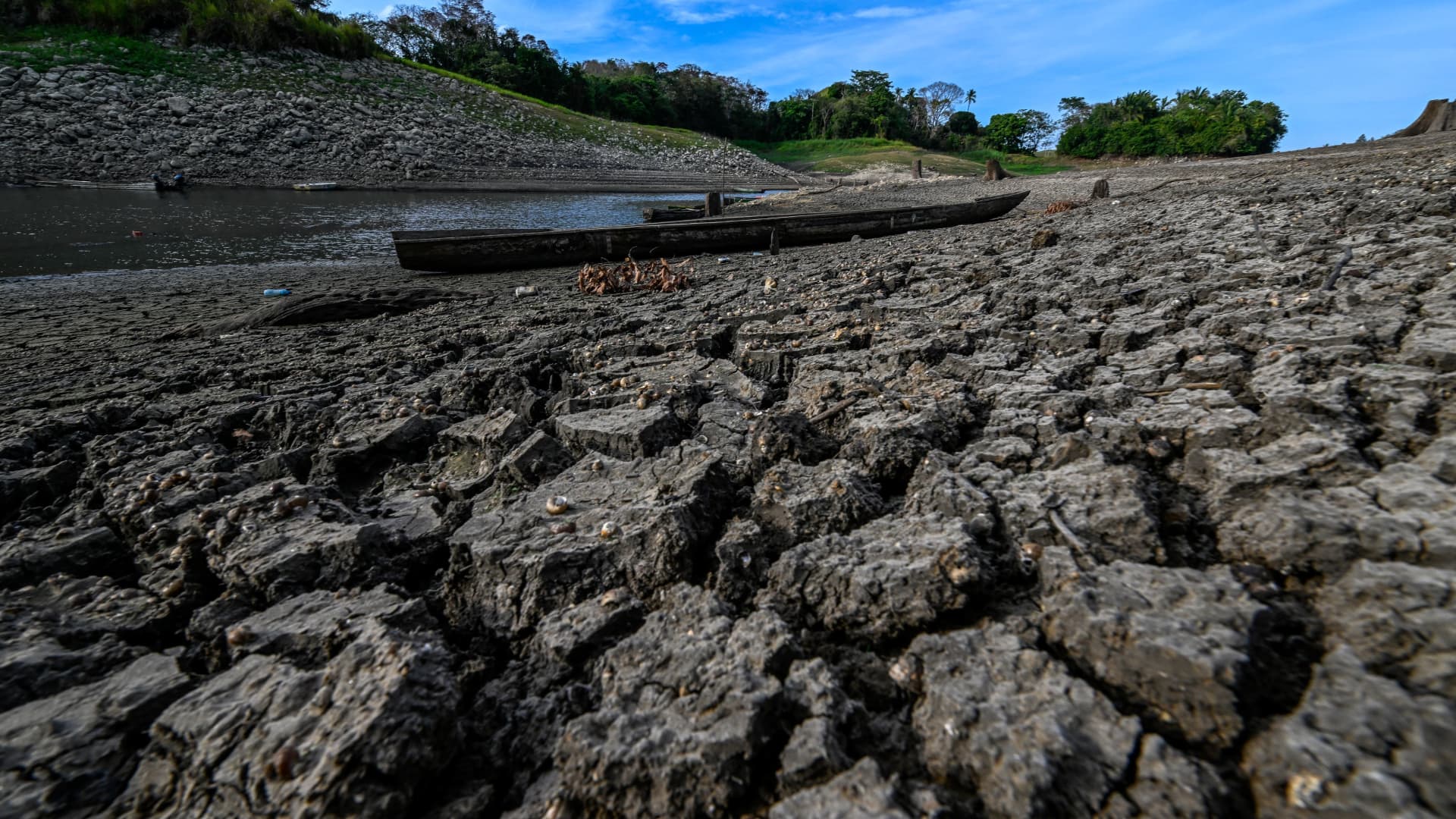View of stranded boats at Alhajuela Lake during the summer drought, in Colon province, 50 km north of Panama City, Panama, on April 21, 2023. The Alhajuela lake is one of the main lakes that supplies water to the locks of the Panama Canal and is at its lowest level of recent years.
Luis Acosta | Afp | Getty Images
The Panama Canal drought conditions have led shipping giant Maersk to inform clients this week that vessels with freight from Oceania (Australia and New Zealand) will no longer traverse the canal because of the ongoing low water levels. Maersk will be servicing the client’s containers by using a “land bridge.”
Instead of going through the Panama Canal, the vessels would call the Ports of Balboa, Panama, on the Pacific side — dropping off cargo heading for Latin America and North America and picking up cargo heading for Australia and New Zealand. The Port of Manzanillo, Panama, on the Atlantic side, will be used for dropping off cargo heading for Australia and New Zealand and picking up cargo heading for Latin and North America. Once at the port, containers would be loaded or unloaded and would then move via an existing rail over a distance of 80 kilometers across Panama to be picked up by another vessel. The change in service covers two transits per week, according to Maersk.
A severe drought has led to water depth and weight restrictions on ships passing through the Panama Canal, and additional container surcharges imposed by ocean carriers on shippers for months.
“Based on current and projected water levels in Gatun Lake, the Panama Canal Authority (ACP) has needed to make reductions to the amount and weight of vessels that can pass through the canal. Whilst we continue to work closely with the ACP, moderating and aligning our operations to fit the changes, we have made changes to services to ensure that our customers are impacted as minimally as possible,” Maersk’s client advisory stated.
Maersk emphasized there would be no delays for Northbound…
Read the full article here

Leave a Reply